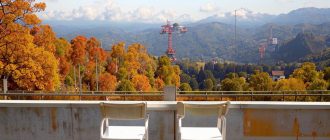You need to prepare thoroughly for a trip to the forest, whether it’s an ordinary picking of mushrooms and berries or a hiking trip. Remember that there is always a potential danger of getting lost.
We talked to various experts and found out what you should take with you into the forest and what to do if you get lost.
What we will tell you about
How to prepare for a hike in the forest?

international survival and safety instructor
“Preparing for a hike in the woods is important for safety and comfort.
First, it is necessary to study the area you are going to go to: maps and possible routes. Secondly, you need to pack your gear taking into account the season and time of day. If we are talking about a day hike without an overnight stay, it is:
- means of navigation (topographic maps, navigation app that works without internet, compass);
- telephone;
- a powerbank with a cable;
- matches or a lighter;
- flashlight;
- water bottle;
- snack food;
- minimum first aid kit.

If it is a long hike of several days, then to the “day kit” should be added more: a tent, sleeping bag, means for cooking and personal hygiene, spare clothes, tools, sufficient food and water.
It is also important to know the weather forecast and prepare for changing conditions. If necessary, learn basic survival skills and be sure to notify someone of your camping plan: where you are going, with whom, why and for how long. Physical fitness is also important to consider.

travel expert, PhD in geography, travel coach
“It is important to dress for the weather, taking into account possible precipitation, daily temperature fluctuations and all kinds of meteorological phenomena.”
It is recommended to dress brightly enough or have an eye-catching element in your clothing (white, red, orange, yellow, reflectors). If you go with a team, it will help the participants to notice you in the forest and keep you in sight. If you get lost, it will increase the chances of finding you faster.
Shoes should be comfortable, closed, flat-soled.
The main rules if you get lost
The most important rule is not to panic. Do not thrash around, stop and restore in memory the route traveled.

When you enter the forest, it is important to understand and fix the direction of movement, the location of roads, power lines, settlements and other objects. It is better to follow the beaten path. If there is a desire to take a shortcut using a new path, remember that in the forest it will not be as easy to do it as on a map in the city. It may take you too far off the route.
As you follow a new route, notice unusual objects and where they are located in relation to the path. For example: “That big rock with the moss on it is near the right turn before where the main road went. So, going back, you will need to turn left after it and come out the same way.” A useful action is to take pictures of such places or mark them in any convenient way to be sure to pay attention.

If you find yourself in the forest without a means of navigation, then, the main rule is to remain calm. First, you need to assess your capabilities to understand how long you can hold out if you have to wait for help. Next, you should try to hear the “sounds of help”, the best way is to close your eyes and stand in silence.
This increases the chances of hearing the sound of a road or railroad (audible up to 10 km), barking dogs (up to 2-3 km), the sound of working agricultural machinery (up to 3-4 km).
Go to these sounds, stop from time to time and listen again. If you don’t manage to hear anything, then it is necessary to determine where the sun is now and how long it is approximately, by these two parameters you can determine the side of the world: if it is morning, the sun is in the east, if it is evening, the sun will be in the west.
Choose the side of the world (north, south, west, east) by intuition where you think help will be, and go there. Stick to that side of the world so you don’t go in circles.
If you see linear landmarks such as power lines, roads, rivers, streams, you can go along them. This way you will get to people faster. At the same time, avoid hard-to-pass places: wooded areas, swamps, dense thickets.

If this is not possible, it is better to stay where you are and not go further away, so as not to increase the search radius.
If you have a phone, call the emergency services and tell them about your situation.
If it is possible to get in touch and give your coordinates, it is better to resort to this option than to try to get out on your own.
How do you deal with panic if you get lost in the woods?

Clinical psychologist, lecturer at the international online psychology institute Smart
“One big psychological rule: start hiking and getting to know the forest gradually, so that its very atmosphere becomes clear. Then, even if you happen to get lost, in this, already familiar enough, and therefore perceived as a safe environment, you will be able to calmly gather your thoughts and make the most useful actions for yourself.”
The expert shared seven techniques that will help you stay calm in such a situation.

- Take a series of short inhales through the nose, pauses and long exhales through the mouth, counting in reverse order. Inhale-10-exhale. Inhale-9-exhale. Inhale-8-exhale. And so on until you notice that you are calming down again and can act rationally.
- Take any object (stone, leaf, soft bark) as an anti-stressor, look at it, memorize it. You can lean against the tree or even hug it to stop anxious thoughts with such “grounding” and orientation to what exists in the material world.
- If humor is your helper, mentally distance yourself from the situation by using it. For example, thinking about how you will tell about this adventure to someone after some time.
- If you feel bodily tension and hands shake from anxiety – clench your fist hard enough for 15 seconds. After that, unclench your palm and shake it. Do several repetitions to feel relaxation and warmth in your hands.
- If you have warm clothes with you, put them on. Warmth is relaxing, it’s important to calm yourself down.
- Imagine a friend of yours was in this situation, what advice would you give them to calm down?
- Give the correct assessment: to get lost is to find yourself in an unfamiliar place. The place itself is simply unfamiliar to you. That doesn’t mean it carries a threat by default. To avoid creating it for yourself in your thoughts, it’s worth considering everything in it calmly and with interest in how it can help you get oriented.

If you’re lost, label yourself. Try to make sounds: bang a stick, stones, shout phrases, sing songs loudly and read poetry aloud. This will help to get rid of panic, among other things.
What are the dangers of hypothermia?
Hypothermia occurs when the body loses heat faster than it can produce it. This results in hypothermia, a condition that is a serious danger to humans and can lead to serious consequences and even death.
It is not necessary to be in sub-zero temperatures to get hypothermia. It is enough to stay in light or wet clothes even at a temperature of +10…+15 degrees.
Initially, a person may feel shivering, covered with “gooseflesh”. Later, when the temperature drops to 35 degrees and less there is weakness, drowsiness, decreased pulse, lethargy, decreased concentration, confusion, numbness of the extremities.

With hypothermia, the body begins to lose its ability to maintain a normal temperature, which can cause metabolic slowdown, cardiac problems, and circulatory arrest. Of course, this can be fatal, and in a fairly short period of time. For example, overnight. That’s why it’s important to know how to build a fire.
How quickly does dehydration occur?
For normal functioning, a person needs an average of two liters of water per day, but this figure varies significantly depending on the conditions. For example, at high temperatures, water consumption and therefore the need for water increases significantly.
Under normal conditions, a person can be without water for up to three days, but there are cases when people were without water for two weeks. This again depends on the conditions in which he is and what is the level of his physical activity.
In hot weather or with intense physical activity dehydration comes faster. Dehydration becomes critical when the body loses a lot of fluid. This can lead to serious organ dysfunction, up to and including death.

Dehydration can be recognized by several signs:
- extreme thirst;
- dry mouth;
- dark-colored urine;
- headache;
- drowsiness;
- fatigue;
- decreased skin elasticity;
- slow heart rate;
- dizziness and weakness.
The human being is 70% water, and the loss of even 1% of its total amount already leads to consequences. Loss of 20% of water is fatal.
In case of these symptoms it is urgent to increase fluid intake. In the forest, water can be obtained from rivers, reservoirs – but it must be boiled over a fire.
How to recognize severe poisoning with water from ditches or unknown food?
If without water a person can live only a few days, then without food – up to 30-40 days. Therefore, try to provide yourself first of all with fluids. This will reduce the risk of poisoning from unknown plants or mushrooms.
A forest is by definition a natural complex with enough moisture, so it is not very difficult to get it. Water can be obtained from overwatered moss, soil, from leaves or from tree trunks.

In severe poisoning from ditch water or unknown food, symptoms such as vomiting, diarrhea, abdominal pain, headache, weakness, fainting, and mental confusion may occur.
If these symptoms occur, first aid should be given immediately. Call an ambulance as soon as possible. It is necessary to cleanse the stomach as soon as possible by inducing vomiting. Next, flush it with plenty of clean water. It is also important to provide rest and warmth.
You need to take activated charcoal from the medicine cabinet, and if it is not at hand, you can eat charcoal from the fire (make sure it is cooled).
To summarize, you should prepare for a hike in the forest in advance, taking into account all possible emergencies.






